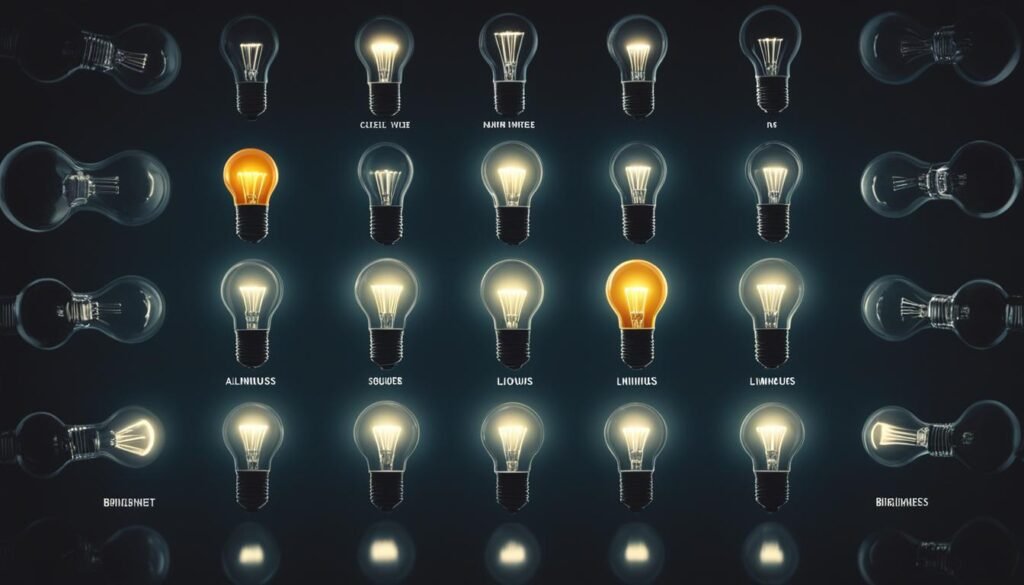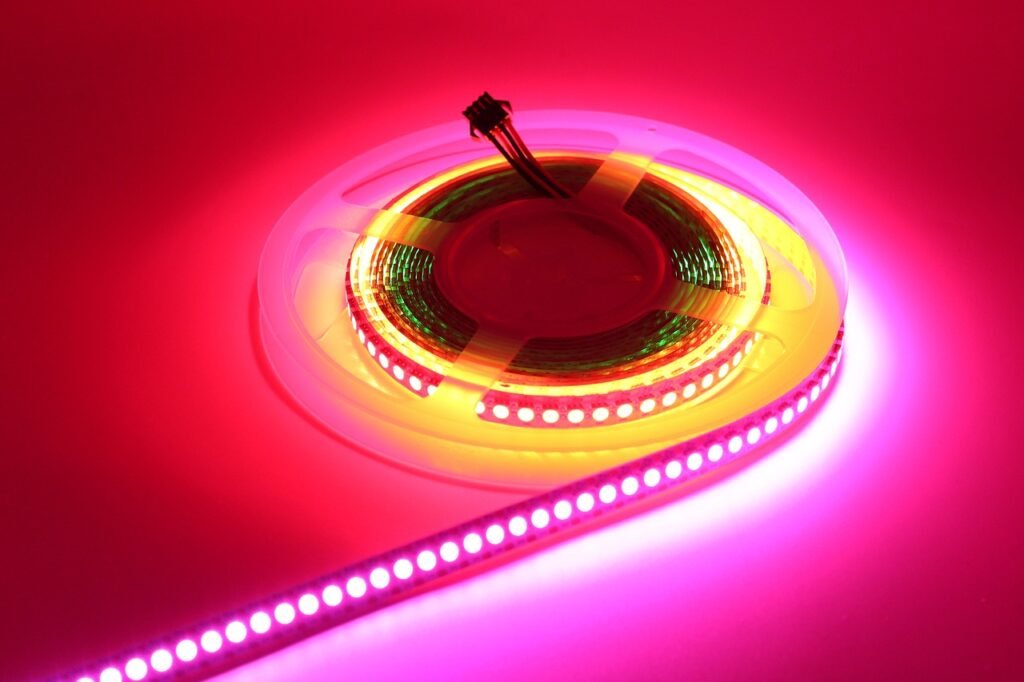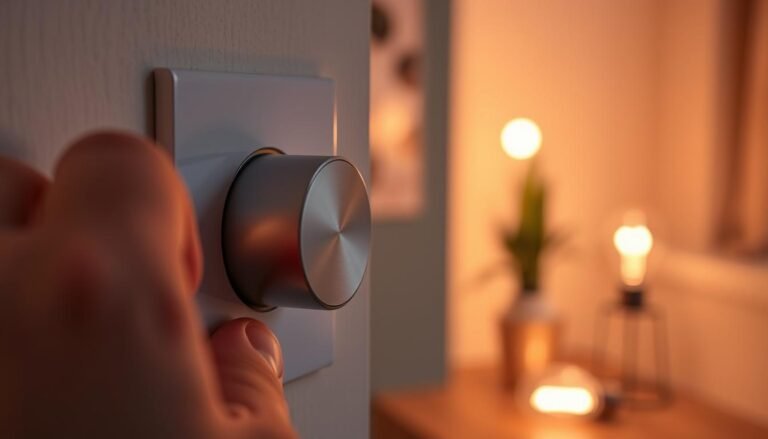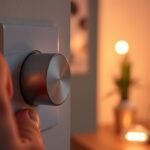Affiliate Disclosure: This post may contain affiliate links. If you make a purchase, we may earn a small commission at no extra cost to you.
When it comes to lighting solutions, understanding the concept of luminous flux (LF) is crucial. It measures the total quantity of visible light emitted by a light source and is expressed in lumens (lm). It provides a measure of brightness or light output, allowing you to select the right lighting solutions for various applications.
If you’re designing lighting for a residential space, knowing the LF can help you create effective and aesthetically pleasing illumination. Different light sources have varying levels with energy-efficient options like LEDs often producing higher light output for the same power consumption.
Key Takeaways:
- Luminous flux measures the total visible light emitted by a light source
- It is expressed in lumens (lm) and indicates the brightness or light output
- LEDs are known for their higher luminous flux and energy efficiency
- The appropriate luminous flux varies based on the lighting application
- Understanding luminous flux is essential for selecting the right lighting solutions
Understanding Luminous Flux (LF)
At its core, LF is a measure of the total quantity of visible light emitted by a light source. It provides an understanding of the brightness or light output that a source produces. It is quantified in lumens (lm), which is a standardized unit of measurement.
Its concept extends beyond just the brightness of a light source, as it can be measured per lamp, per fixture, per linear meter, or per square meter, depending on the lighting application. This adaptability allows for the evaluation of different light sources and lighting designs based on their effectiveness.
This is an essential consideration when choosing lighting solutions for various applications. Whether you’re designing lighting for a residential space or a commercial setting, understanding the measure of brightness provided by LF helps ensure that you select the right light source.
For a visual representation, consider the following table:
| Light Source | Luminous Flux (lm) |
|---|---|
| Incandescent Bulb | 800 lm |
| LED Bulb | 1600 lm |
| Fluorescent Tube | 2500 lm |
As shown in the table, different light sources have varying LF values. LEDs, for example, emit higher levels of LF for the same power consumption compared to incandescent bulbs, which are now banned in the US. This makes LEDs more energy-efficient and capable of producing brighter light output. By understanding these differences, you can make informed decisions when selecting lighting solutions for your specific needs.

Luminous Flux in Different Light Sources and Applications
LF, which measures the total quantity of visible light emitted by a light source, can vary significantly across different types of lighting. Traditional incandescent bulbs, for example, have a relatively low LF due to their inefficient conversion of electrical energy into visible light. On the other hand, LED strips are known for their energy efficiency and can provide a significantly higher LF for the same power consumption.
When it comes to lighting applications, the appropriate LF can differ based on the desired lighting effect. LED strips, for instance, come in a range of LF options. For subtle accent lighting, a strip with as low as 100 lumens per meter may be sufficient.

However, for high-intensity illumination, LED strips can offer as much as 1,500 lumens per meter. Understanding the right LF for different applications is crucial for selecting the appropriate lighting solutions.
Luminous Flux Comparison: LED Strips vs. Incandescent Bulbs vs. Fluorescents
| Light Source | Luminous Flux (lm) |
|---|---|
| LED Strips | Varies from 100 to 10,000 lumens per meter |
| Incandescent Bulbs | Approximately 15 to 1600 lumens |
| Fluorescent Lamps | Ranges from 800 to 5000 lumens |
As shown in the table above, LED strips offer a wide range of LF options, making them versatile for various lighting applications. Incandescent bulbs, with their lower LF, are better suited for traditional household lighting. Fluorescent lamps, on the other hand, provide higher LF and are often used in large spaces such as offices or industrial environments.
When selecting light sources and designing lighting solutions, it’s crucial to consider the LF requirements for different applications. By understanding the various LF options available in different light sources, you can ensure effective and efficient illumination that meets your specific lighting needs.
Importance of Luminous Flux in Lighting Design
Luminous flux is a crucial consideration in lighting design as it determines the brightness of a light source, ultimately leading to effective illumination in any environment. By understanding the appropriate LF for different lighting applications, you can choose the right light source to achieve optimal results.
When selecting light sources, it is essential to consider the luminous flux as it directly impacts how well a space is lit. Whether you are illuminating a residential area or a commercial setting, the right amount of LF ensures that the desired lighting effect is achieved. By providing effective illumination, you can create a visually pleasing and functional environment.
Effective lighting design goes beyond just brightness. By choosing light sources with the appropriate LF, you can also ensure energy efficiency. LED lights, for example, are known for their high LF and low power consumption, making them a sustainable choice for lighting solutions.
In conclusion, understanding the importance of LF in lighting design is essential for choosing the right light source and achieving effective illumination. By considering the LF, you can create spaces that are well-lit, energy-efficient, and visually appealing, improving the overall functionality and aesthetics of any environment.
FAQ
What is luminous flux?
Luminous flux is a fundamental concept in lighting design that measures the total quantity of visible light emitted by a light source. It is expressed in lumens (lm) and provides a measure of brightness or light output.
How is luminous flux measured?
Luminous flux is quantified in lumens (lm), which is a standardized unit of measurement for visible light.
Why is understanding luminous flux important?
Understanding luminous flux is crucial for selecting the right lighting solutions for different applications. It helps determine the brightness of a light source and guides the choice of light sources for effective illumination.
How does luminous flux vary across different light sources?
Luminous flux can vary widely across different light sources. For example, LEDs are known for their energy efficiency and can provide a significantly higher luminous flux for the same power consumption compared to traditional incandescent bulbs.
How does luminous flux vary in different lighting applications?
The luminous flux can also vary depending on the lighting application. For example, LED strips can range from as low as 100 lumens per meter for subtle accent lighting to as high as 1,500 lumens per meter for high-intensity illumination.
How does luminous flux impact lighting design?
Luminous flux plays a critical role in lighting design by guiding the selection of the right light source for different applications. It helps achieve effective illumination and create the desired lighting effect, whether it’s ambient lighting in a residential setting or high-intensity illumination in a commercial environment.
Source Links
- https://actionservicesgroup.com/blog/lighting-measurements-an-in-depth-guide-part-1/
- https://www.uk.lumistrips.com/lumistrips-blog/luminos_flux_explained/
- https://lamptwist.com/nl/pages/lighting-guide-lumen-lm








